Class 4 Maths Mela Chapter 10 Elephants, Tigers and Leopards NCERT Solutions
Textbook Page 149
Q. You have played a version of this game in the chapter ‘Vacation with my Nani Maa’ in Grade 3. We will add either 1 or 2 each time to reach the target number 10.
How to play?
1. Player 1 starts by choosing either 1 or 2.
2. Player 2 can also choose either 1 or 2 and add it to the number chosen by Player 1.
3. The two players continue playing by choosing either 1 or 2 and adding it to the previous total.
4. The player who reaches 10 first is the winner.
5. Play it for a few rounds.
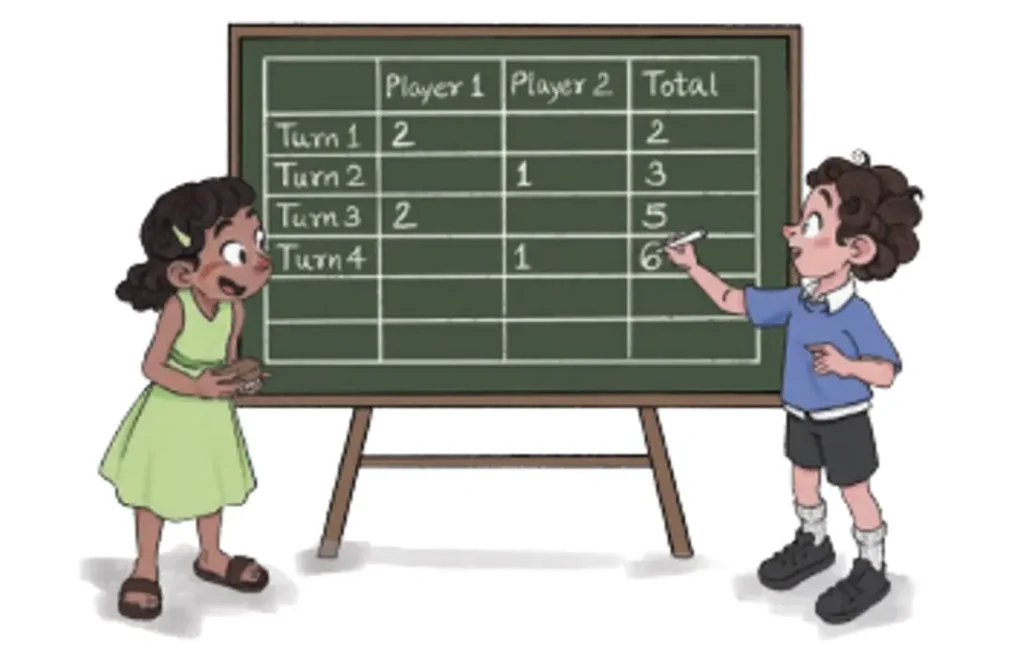
Can you win the game if
(а) the other player has reached the total of 6 and it is your turn?
(b) the other player has reached the total of 7 and it is your turn?
(c) the other player has reached the total of 8 and it is your turn?
Solution:
(a) Yes, I can win by adding 1 to make the total 7.
If the other player adds 1, the total becomes 8, and I add 2 to win with 10.
If they add 2, the total becomes 9, and I add 1 to win.
(b) No, I can’t win the game.
If I add 1 to 7 to make 8, the other person can add 2 and win.
If I add 2 to make 9, they can add 1 and win.
(c) Yes, I can win by adding 2 to 8 on my turn to make 10.
Textbook Page 150
Q. Play the game to reach other target numbers (like 10, 11, or 12) by adding 1 or 2 each time. Can you find a number in each case when you are sure that you can win?
Solution:
Target number 10 → Winning number – 8 or 9.
Target number 11 → Winning number – 9 or 10.
Target number 12 → Winning number – 10 or 11.
You are always sure to win when it’s your turn and the number is 1 or 2 less than the target.
Addition Chart
Q. Look at the table given below and discuss how the table is made.
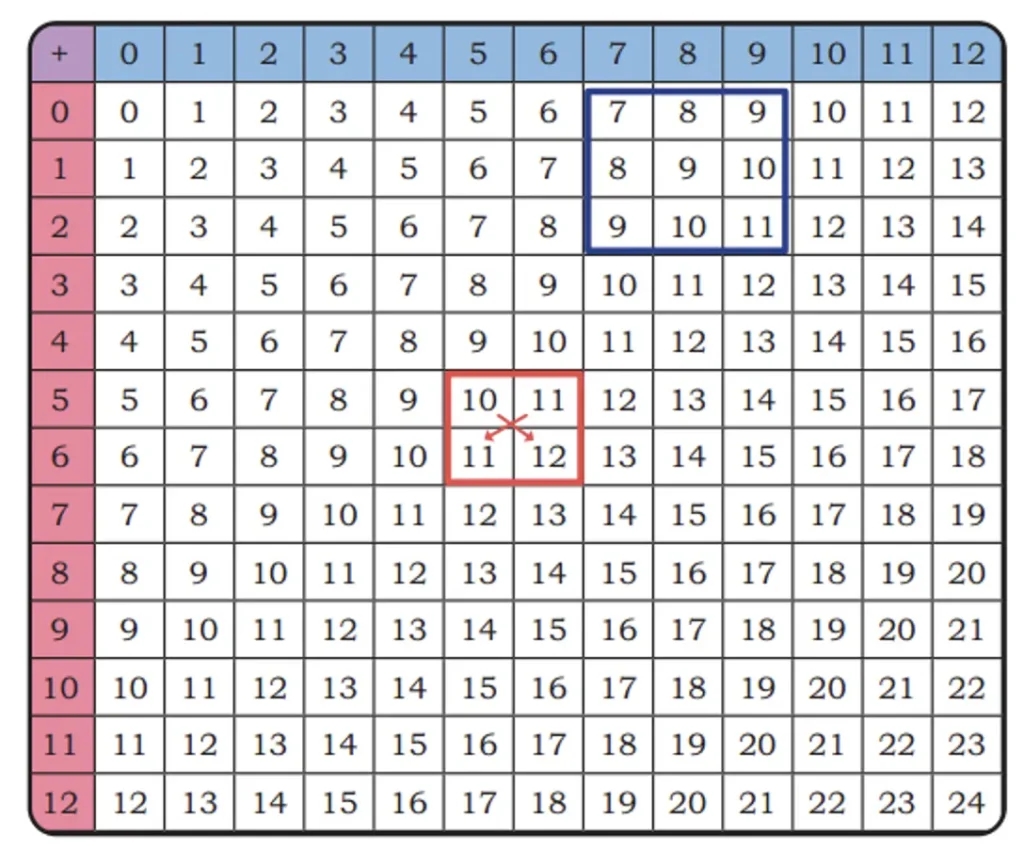
1. Identify some patterns in the table.
Solution:
(i) Moving along a row, the numbers increase by 1.
(ii) Moving down a column, the numbers increase by 1.
(iii) The diagonals from top-left to bottom-right (↘) increase by 2 each time.
(iv) The diagonals from top-right to bottom-left (↙) contain the same numbers.
2. Observe the cells where the number 9 appears in the table. How many times do you see number 9? What about other numbers?
Solution:
Number 9 appears 10 times in the table.
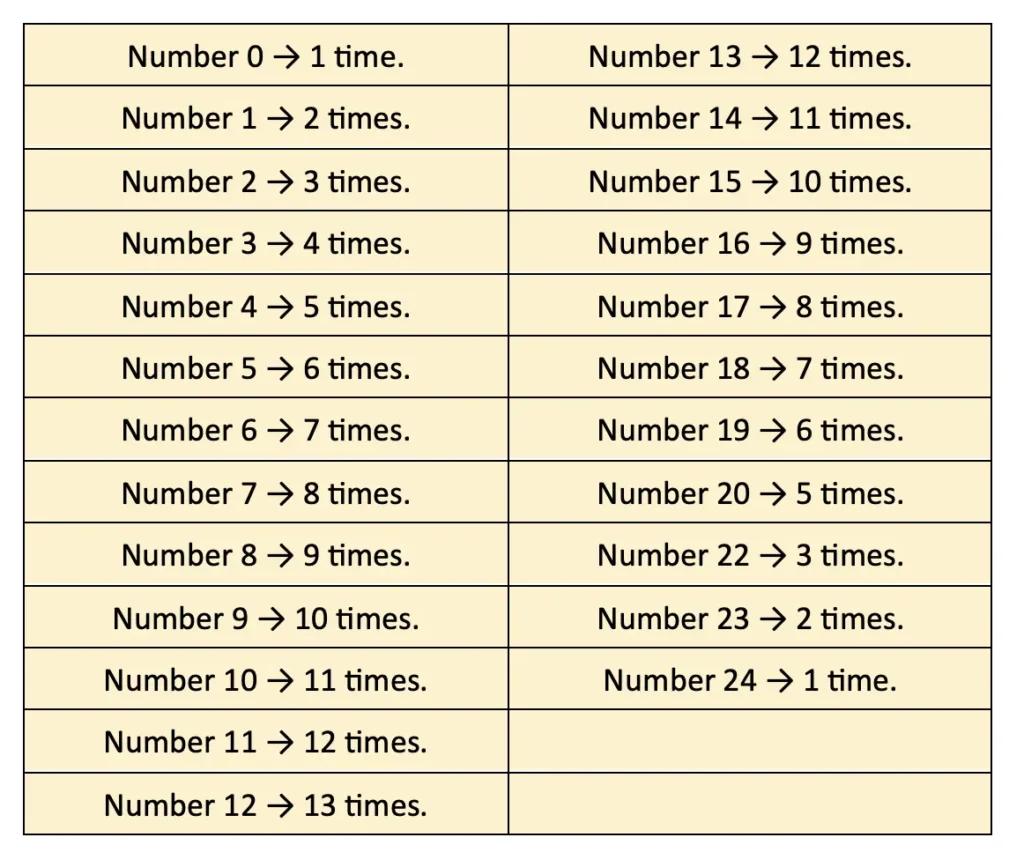
3. Are there any rows or columns that contain only even numbers or only odd numbers? Explain your observation.
Solution:
There are no rows or columns with only even or only odd numbers in the table because the sum depends on both numbers as:
Even + Even = Even
Odd + Odd = Even
Odd + Even = Odd.
Textbook Page 151
4. Look at the window frame highlighted in red colour in the table.
a) Find the sum of the two numbers in each row.
b) Find the sum of the two numbers in each column. What do you notice?
c) Now, find the sum of the numbers in each of the two diagonals marked by arrows. What do you notice?
d) Now, put the red window frame in other places and find the sums as above. What do you notice?
Solution:
a) Sum of 10 and 11 = 10 + 11 = 21.
Sum of 11 and 12 = 11 + 12 = 23.
b) Sum of 10 and 11 = 10 + 11 = 21.
Sum of 11 and 12 = 11 + 12 = 23.
c) Sum of 10 and 12 = 10 + 12 = 22.
Sum of 11 and 11 = 11 + 11 = 22.
d) The sums of two numbers along rows and columns increase by 1, while the sums along diagonals remain the same.
5. Identify some patterns and relationships among the numbers in the blue window frame.
Solution:
(i) Numbers increase by 1 along rows/columns.
(ii) Numbers in each column and row are identical.
(iii) The main diagonal rises by 2 each step.
(iv) The other diagonal is constant (9).
Reverse and Add
a) Take a 2-digit number, say, 27. Reverse its digits (72). Add them (99). Repeat for different 2-digit numbers.
Solution:
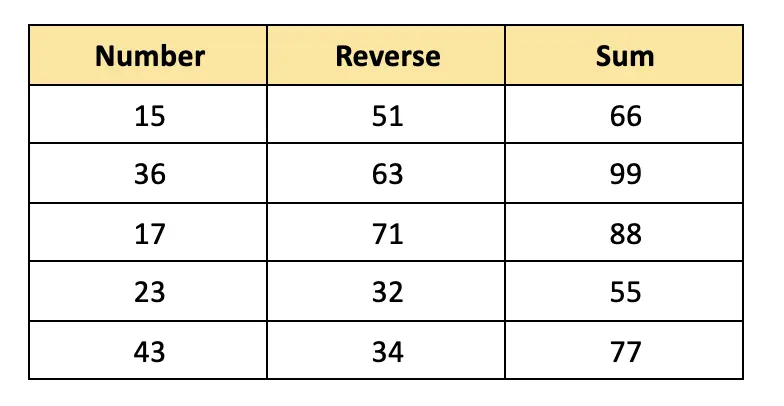
b) What sums can we get when we add a 2-digit number with its reverse?
Solution:
On adding a 2-digit number with its reverse, we get a number from the times-11 table.
c) List down all numbers which when added to their reverse give
i) 55 ii) 88
Solution:
i) 55
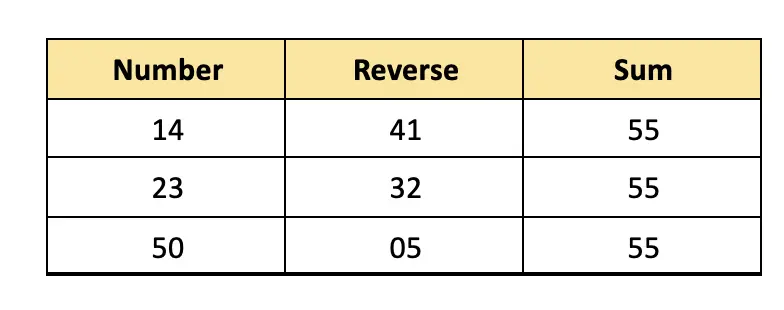
Thus, 14, 23, 32, 41 and 50 are all numbers that when added to their reverse give 55.
(ii) 88
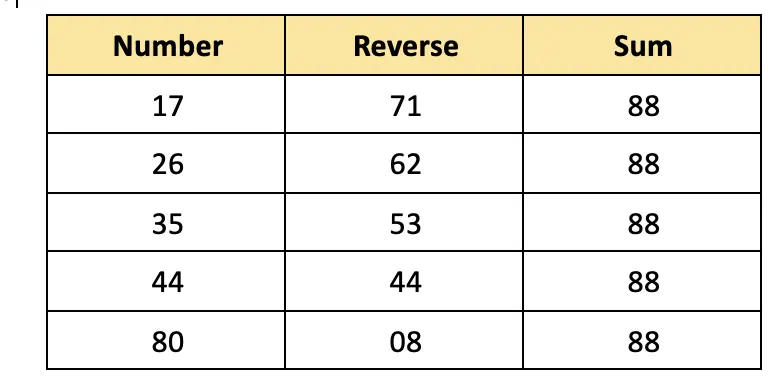
Thus, 17, 26, 35, 44, 53, 62, 71, and 80 are all numbers that when added to their reverse give 88.
d) Can we get a 3-digit sum? What is the smallest 3-digit sum that we can get?
Solution:
Yes, we can get a 3-digit sum by adding a number and its reverse.
Since, 19 + 91 = 110.
Thus, 110 is the smallest 3-digit sum.
Q. Fill in the blanks with appropriate numbers.
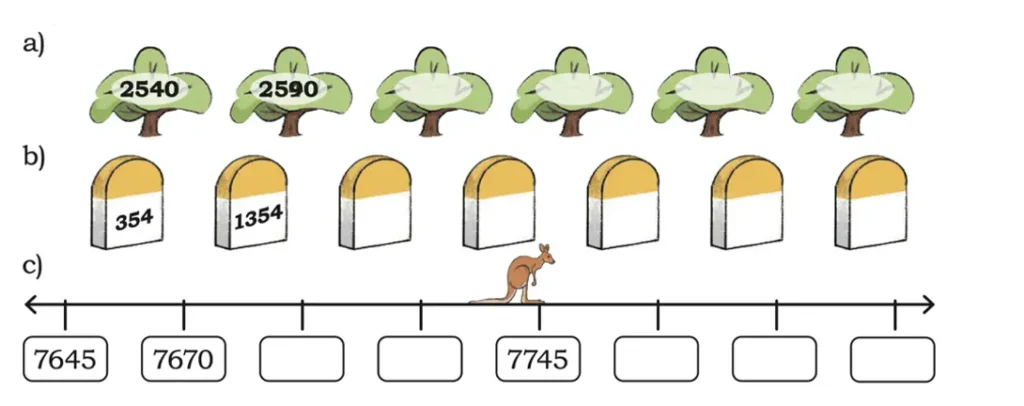
Solution:
(a) 2590 – 2540 = 50.
Therefore, each number increases by 50.

(b) 1354 – 354 = 1000.
Therefore, each number increases by 1000.

(c) 7670 – 7645 = 25.
Therefore, each number increases by 25.

Textbook Page 152
How Many Animals?
India is rich in biodiversity. It is home to some of the endangered wildlife, like elephants, tigers and leopards.
3/4 of the world’s tiger population and 3/5 of the Asiatic elephant population is in India.
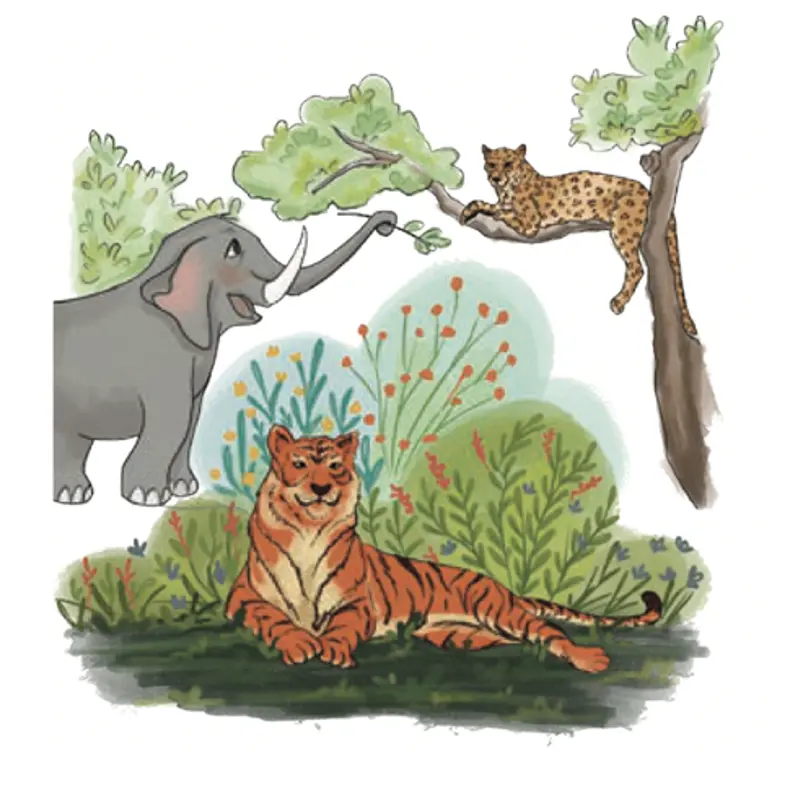
1. The population of elephants in Karnataka is 6049 and in Kerala is 3054. How many total elephants are there in these two states? Estimate the answer
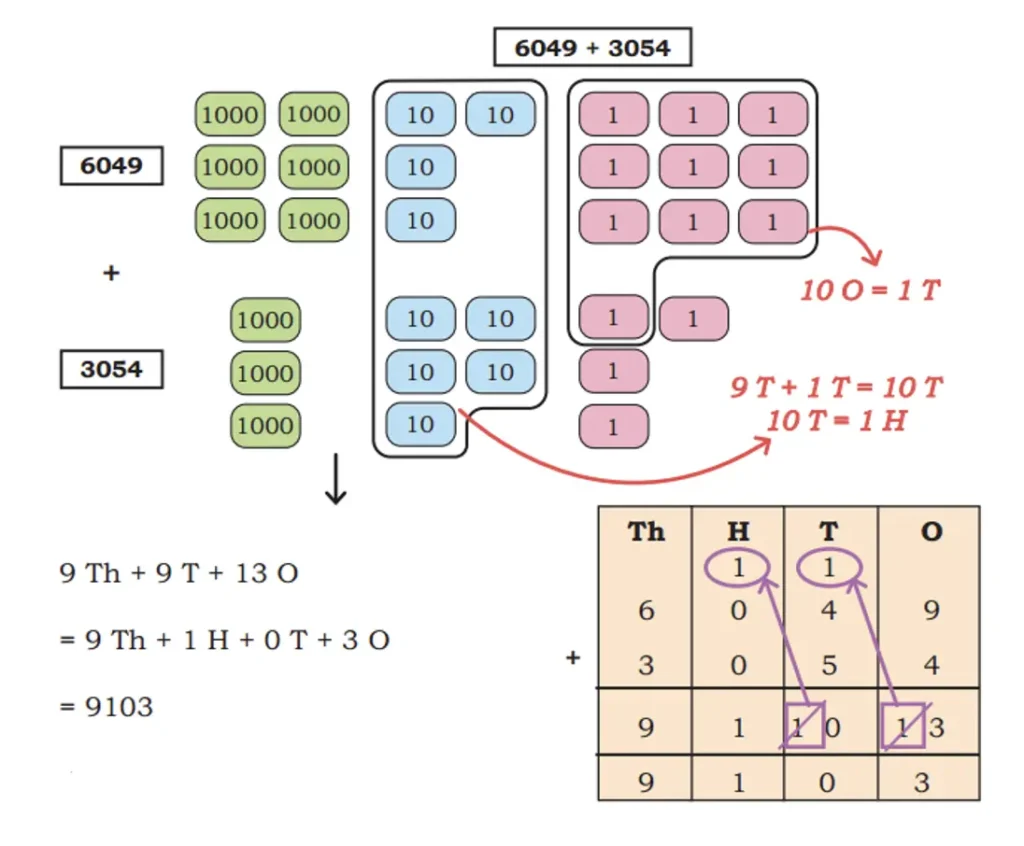
Solution:
6000 + 3000 = 9000.
So, there are approximately 9000 elephants in these states.
Textbook Page 153
2. The highest number of leopards are found in three states. Gujarat has 1355, Karnataka has 1131 and Madhya Pradesh has 1817. How many total leopards are there in these states?
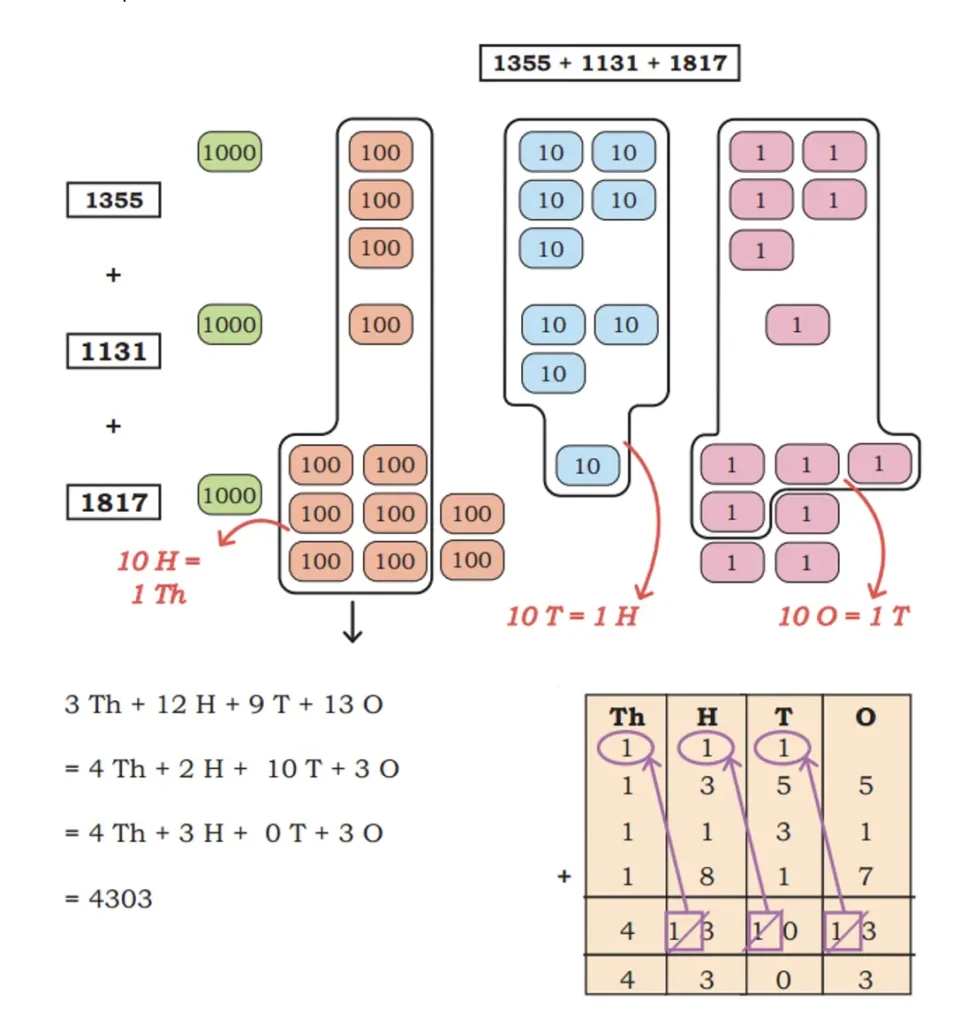
Solution:
1000 + 1000 + 2000 = 4000.
So, there are approximately 4000 elephants in these states.
Textbook Page 154
3. Maharashtra has 444 tigers. Madhya Pradesh has 341 more tigers than Maharashta. Uttarakhand has 116 tigers more than Maharashtra.
(a) How many tigers does Madhya Pradesh have?
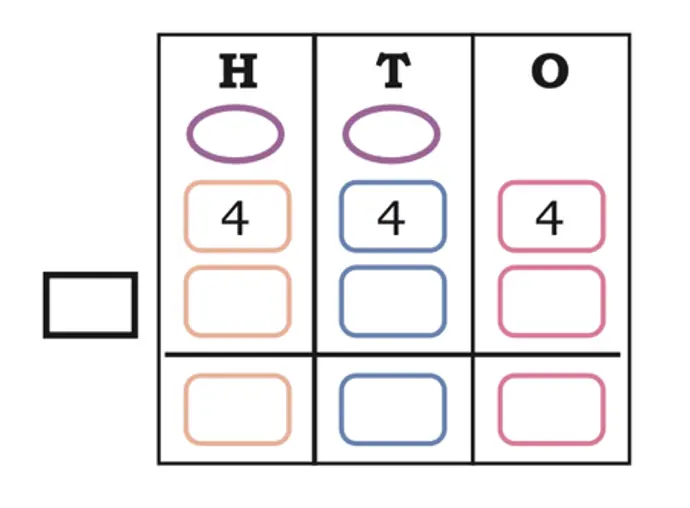
Solution:
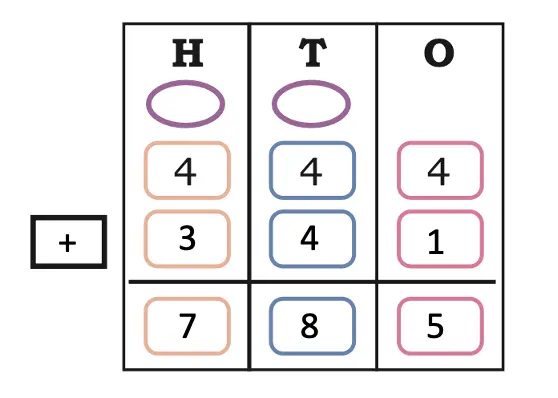
Therefore, Madhya Pradesh has 785 tigers.
(b) How many tigers does Uttarakhand have?
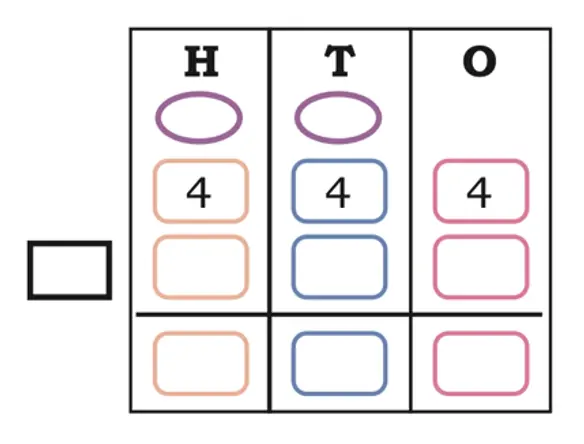
Solution:
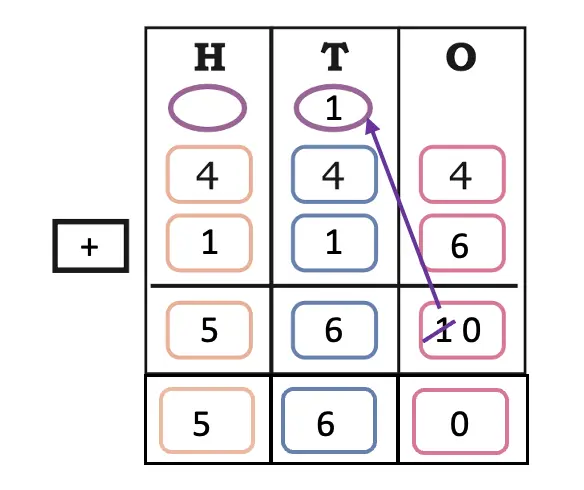
Therefore, Uttarakhand has 560 tigers.
(c) How many tigers does Madhya Pradesh and Uttrakhand have?
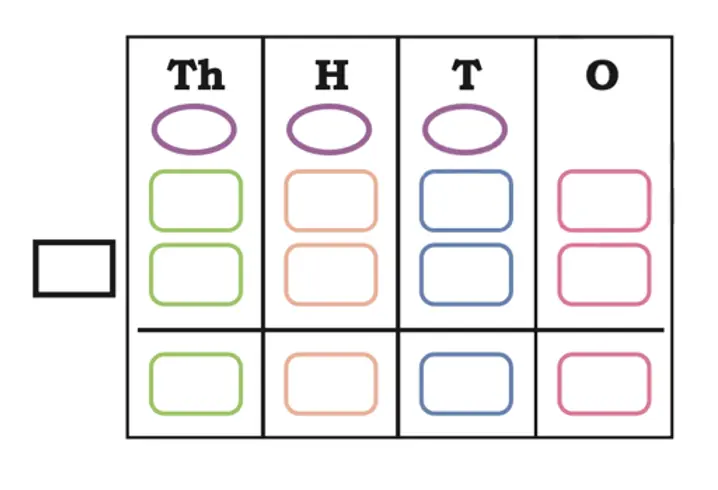
Solution:
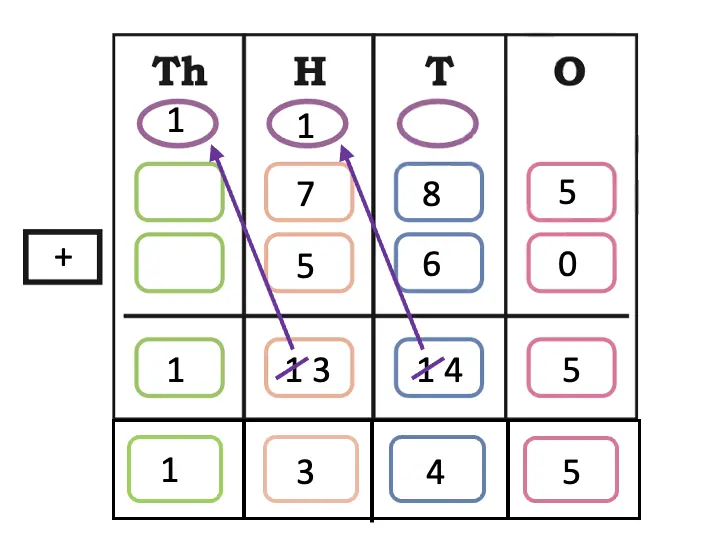
Therfore, Madhya Pradesh and Uttarakhand together have 1345 tigers.
(d) How many tigers are there in total across the three states?
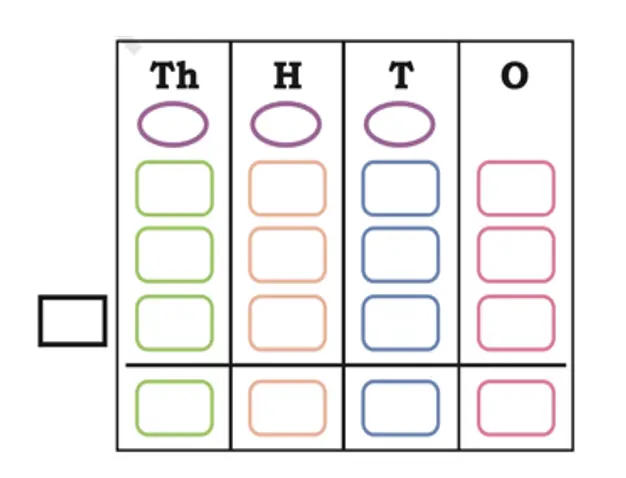
Solution:
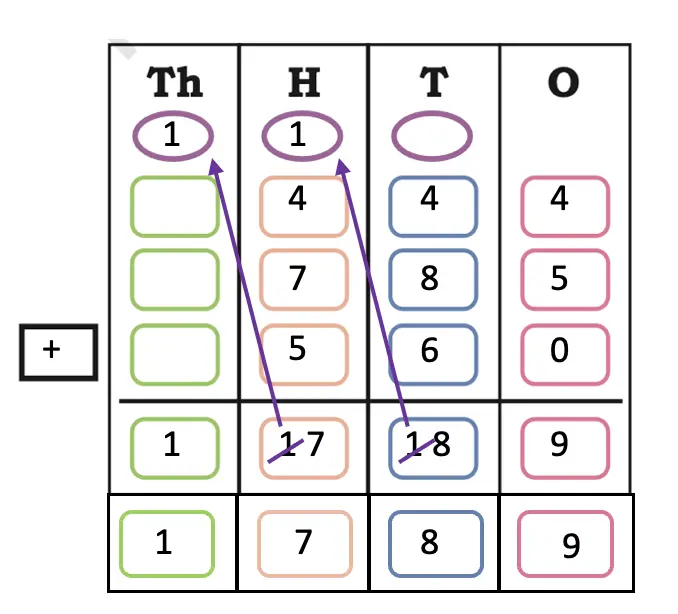
Therefore, there are a total of 1789 tigers across the three states.
Textbook Page 155
More or Less
1. Assam has 5719 elephants. It has 3965 more elephants than Meghalaya. How many elephants are there in Meghalaya? Estimate the answer.
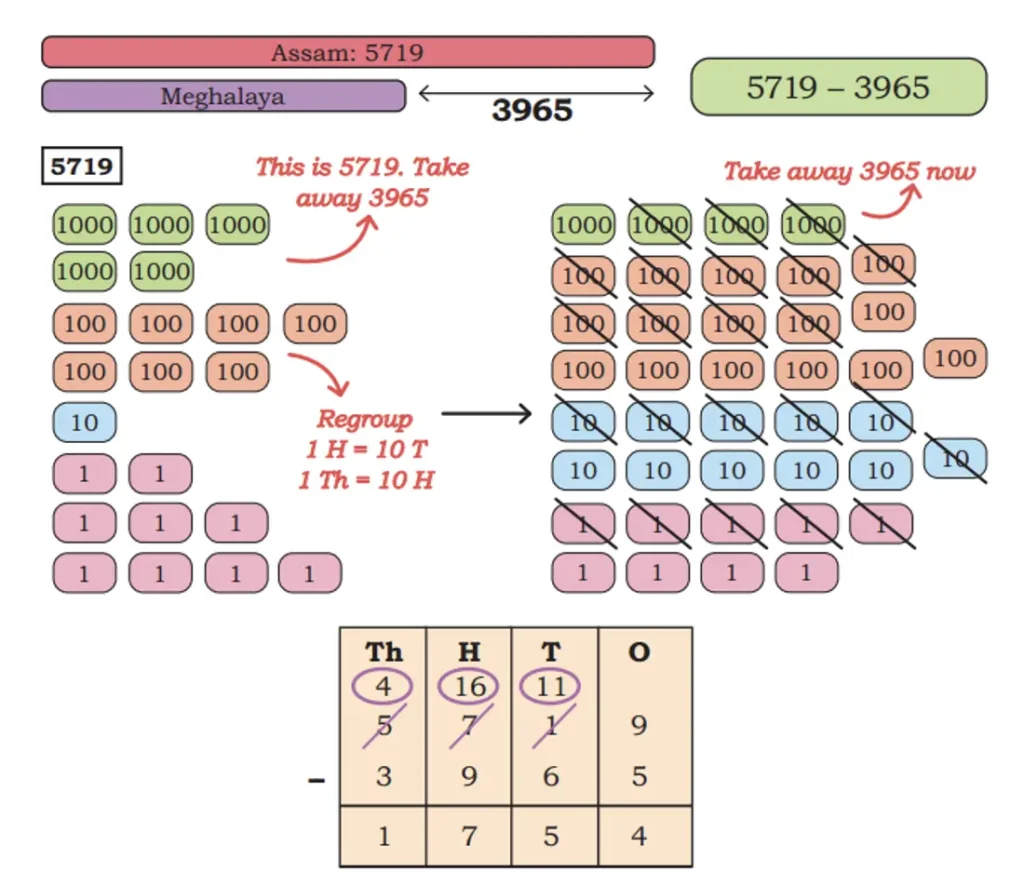
Solution:
6000 – 4000 = 2000.
So, there are approximately 2000 elephants in Meghalaya.
2. The population of leopards as per the 2022 census was 8820 in the Central India and the Eastern Ghats. It had increased by 749 in comparison to the number of leopards in 2018 in the same region. How many leopards were there in 2018?
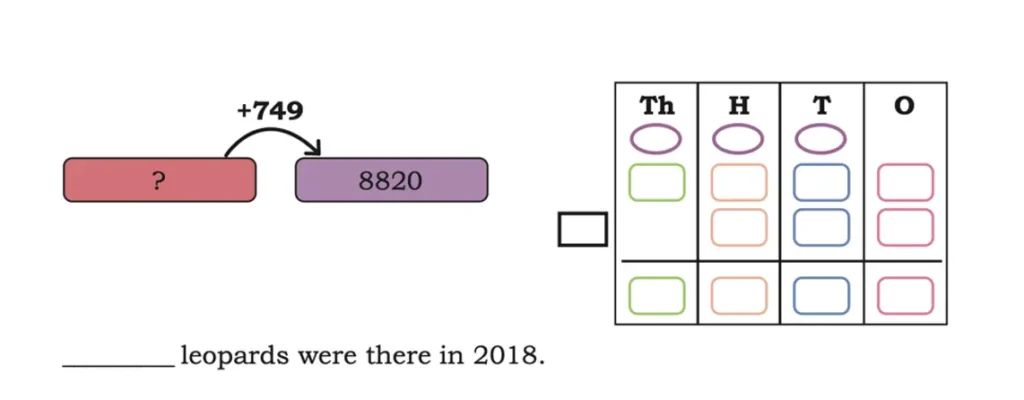
Solution:
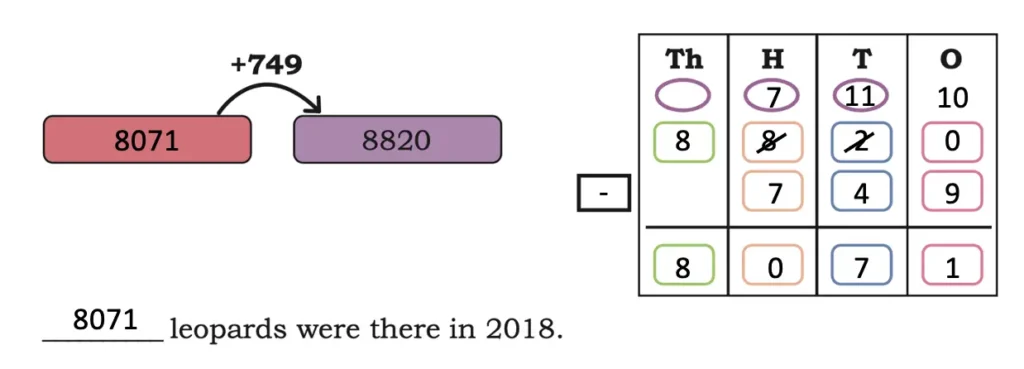
Textbook Page 156
Q. Write the number of animals on this map based on the data from the problems in the previous pages.
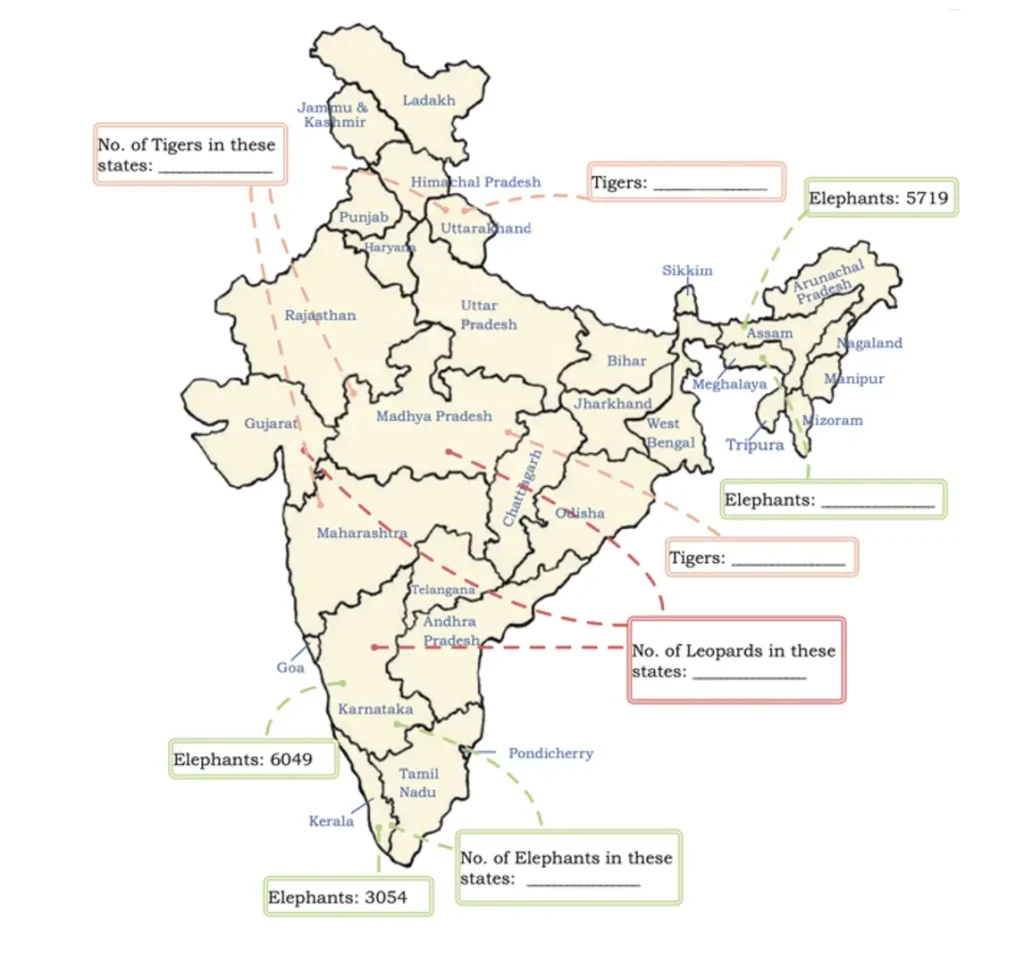
Solution:
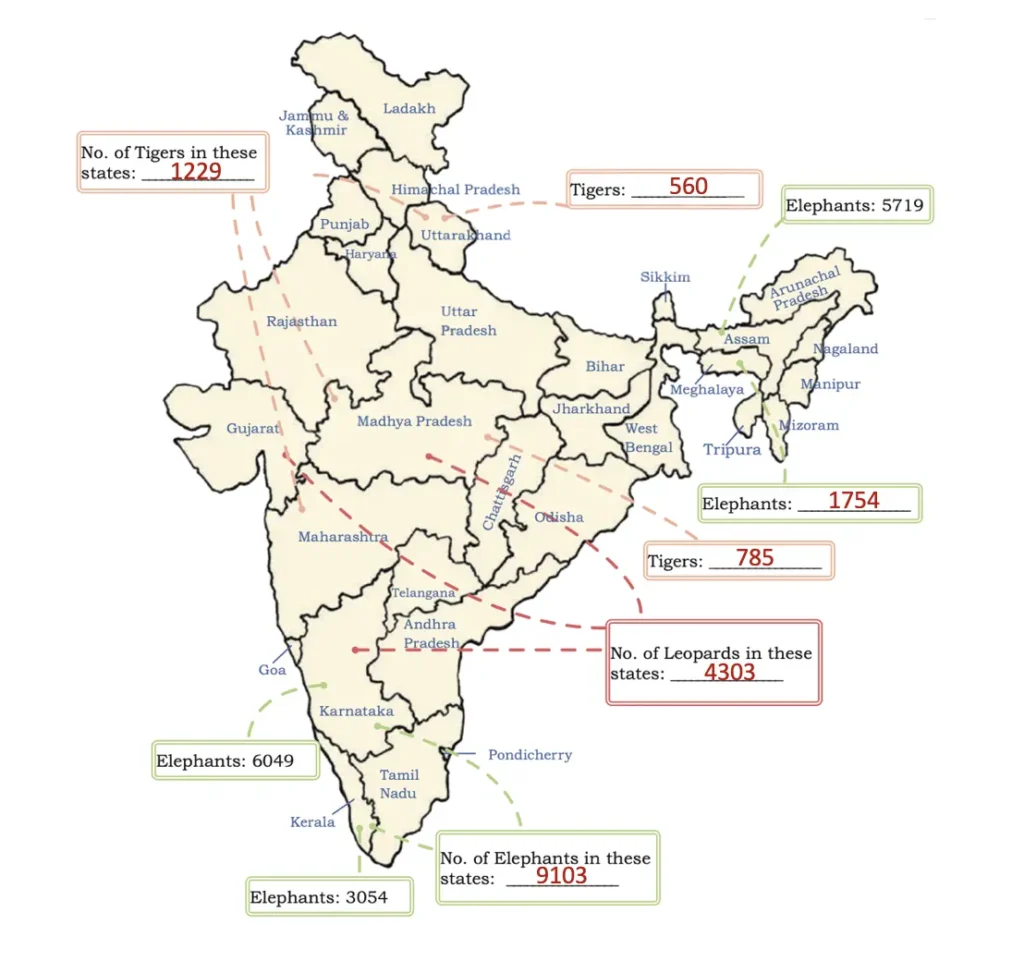
Textbook Page 157
1. The board in the ticket office in the Kaziranga National Park shows the following:
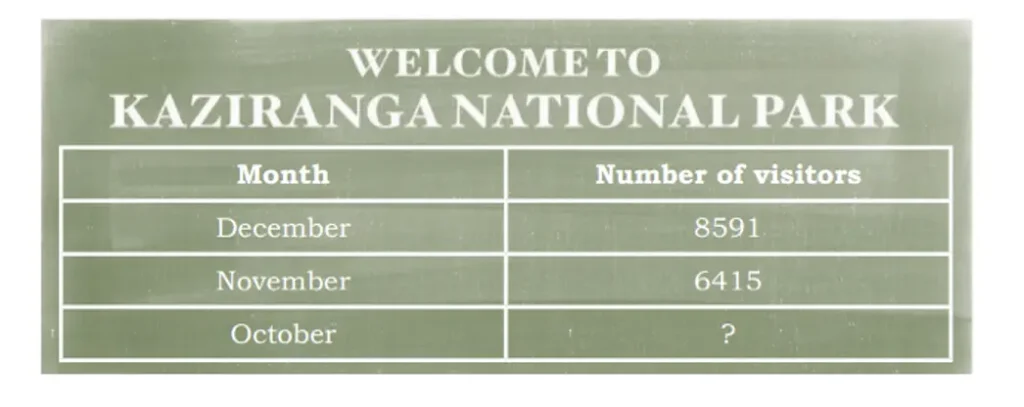
(a) How many more visitors came in December than in November?
(b) The number of visitors in November is 1587 more than October. How many visitors were there in October?
Solution:
(a) Visitors in December = 8591
Visitors in November = 6415
Difference in the number of visitors = 8591 – 6415 = 2176.
Hence, 2176 more visitors came in December than in November.
(b) No. of Visitors in November was more than in October by = 1587
Visitors in October = 6415 – 1587 = 4828.
Hence, the number of visitors in October was 4828.
2. In a juice making factory, women make different types of juices as given below:
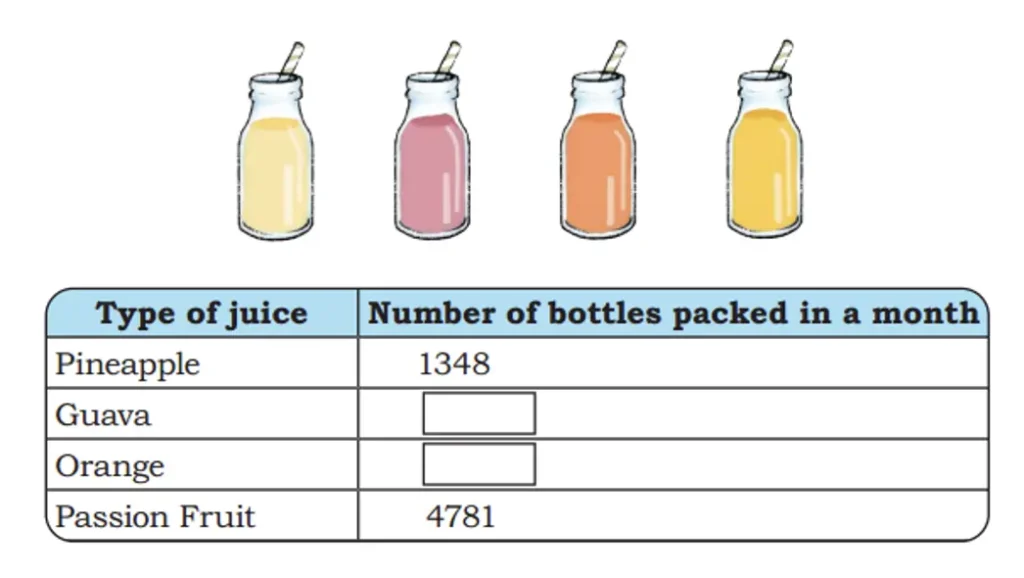
(a) The number of bottles of guava juice is 759 more than the number of bottles of pineapple juice. Find the number of bottles of guava juice.
(b) The number of bottles of orange juice is 1257 more than the number of bottles of guava juice and 1417 less than the number of bottles of passion fruit juice. How many bottles of orange juice are made in a month?
(c) Is the total number of bottles of guava juice and orange juice more or less than the number of bottles of passion fruit juice? How much more or less?
Solution:
(a) The number of bottles of guava juice is 759 more than pineapple juice.
Guava juice bottles = 1348 + 759 = 2107.
(b) The number of bottles of orange juice is 1257 more than guava juice.
Orange juice bottles = 2107 + 1257 = 3364.
So, 3364 bottles of orange juice are made in a month.
(c) Guava + Orange = 2107 + 3364 = 5471
Passion fruit = 4781
5471 – 4781 = 690
So, the total number of guava and orange juice bottles is 690 more than passion fruit juice bottles.
Textbook Page 158
3. In a small town, the following vehicles were registered in the year 2022. Find the number of vehicles as per the conditions given below.
a) The number of buses is 253 more than the number of jeeps. How many buses are there in the town?
b) The number of tractors is 5247 less than the number of buses. How many tractors are in the town?
c) The number of taxis is 1579 more than the number of tractors? How many taxis are there?
d) Arrange the numbers of each type of vehicle from lowest to highest.

